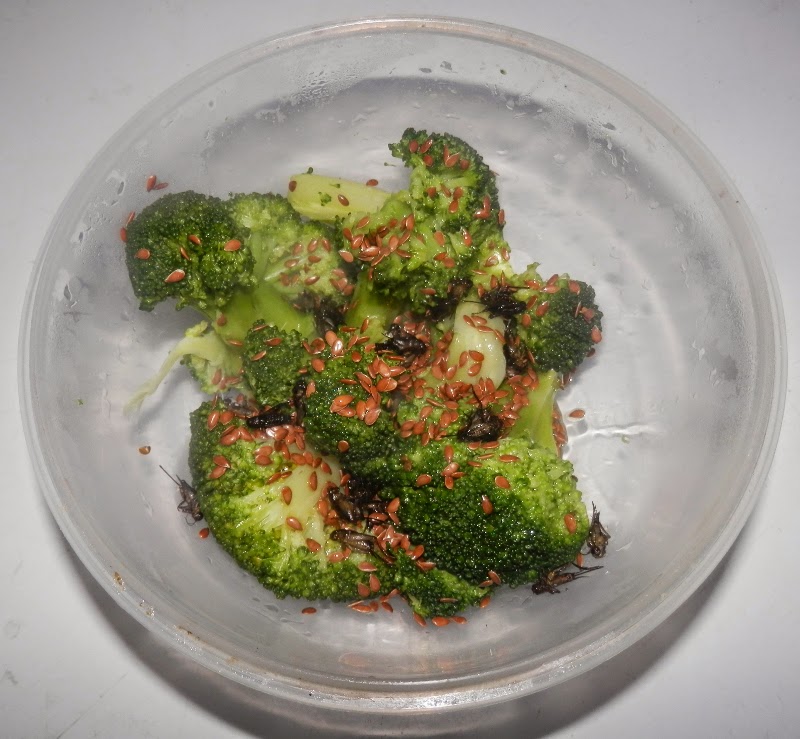In the United States this isn't exactly a popular snack, relegated to ridiculously overpriced boxes of snacks that are basically meant as a quirky gag gift for the person who will eat anything, but around the world insects have been an important part of the food supply. I recently ordered the Eat-A-Bug Cookbook by David Gordon, and although it doesn't have that many good paleo recipes, it did have some good information on harvesting. See, I'd always been told never to actually harvest wild insects for eating. I found out recently that the two main issues are parasites (which are killed off by cooking) and chemicals (which, although I'm sure they're present, shouldn't be that abundant in my scrubby mostly-weeds-and-no-pesticides-ever lawn). As most paleo eaters I know are (unlike me) in the city, then it might be a better idea for you to buy house crickets from a pet shop instead, which is the prevailing advice among most entomophagy buffs I've encountered.
Again, since insect recipes tend to be very non-paleo, I've decided to start developing some more paleo options. Here are the first two I'm comfortable with:
Garlic and Cayenne Crispy Crickets
This is barely a recipe, to be honest, and if you look for cricket recipes at all you will likely find variations on this in abundance. Still, out of the two I'm presenting you today, this is the most unexpectedly tasty.
Gather a bunch of crickets depending on how many you can acquire (again, I am pretty much limited to what I find in my lawn, and pet store crickets are expensive). Put them in the freezer--alive--for about ten or twenty minutes (I've found putting them in for ten will slow their metabolism but not kill them, after twenty they should be dead; this is up to personal preference). Take them out and rinse them in cold water, straining it off with a colander.
Dust the crickets with garlic powder, cayenne pepper, and salt. I used maybe 3 parts garlic, 2 parts salt, and 1 part cayenne. This will vary a lot by taste.
Spread the crickets on a cookie sheet (actually I used a slow cooker pan, but I also didn't make too many). If they start moving... don't worry too much. They probably won't go anywhere. Roast them at 200oF for two hours, or until sufficiently crispy. Eat as a snack or use as an ingredient in other dishes.
The legs can get annoying. If they annoy you, you can choose to roll them gently between your hands after they're cooked. The legs will crunch right off. I, however, do not consider them particularly bothersome.
Field Cricket and Flaxseed Broccoli
Admittedly a lot of my recipes involve putting things on broccoli. I think I already posted my recipe for flax seed broccoli, which I ate every damn day for probably two weeks a while ago. It's easy: Just add flaxseeds, sliced almonds, and extra virgin olive oil to broccoli. Eat.
This is a variation on that, but instead of sliced almonds, I added sautéed field crickets and butter.
FYI: Crickets actually taste like a bizarre mix between shrimp and almonds anyway. So it made perfect sense.
The sauté was done in some light olive oil and very briefly. Crickets are tiny and therefore cook fast. Meanwhile I made the broccoli and added a tablespoon of brown flaxseeds and a half tablespoon of Kerrygold Irish butter. The crickets were placed on top of that.
This dish wasn't bad, but the problem is as follows: The crickets didn't really add anything except protein. And yeah, that's great, but if I'm going to add something I want to taste it. I think if I did this again, I'd actually add the crickets from the recipe above instead of just sautéing them.






